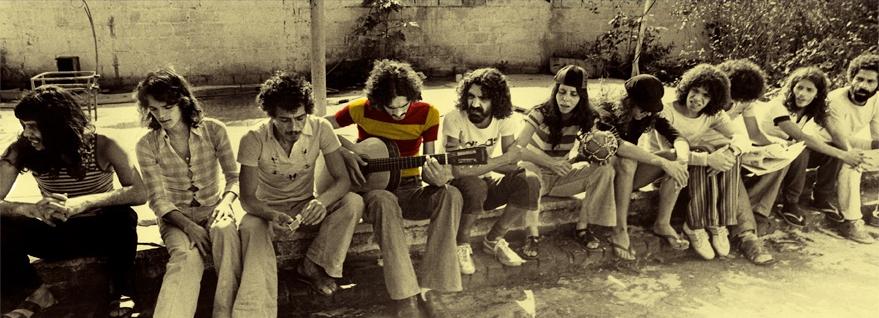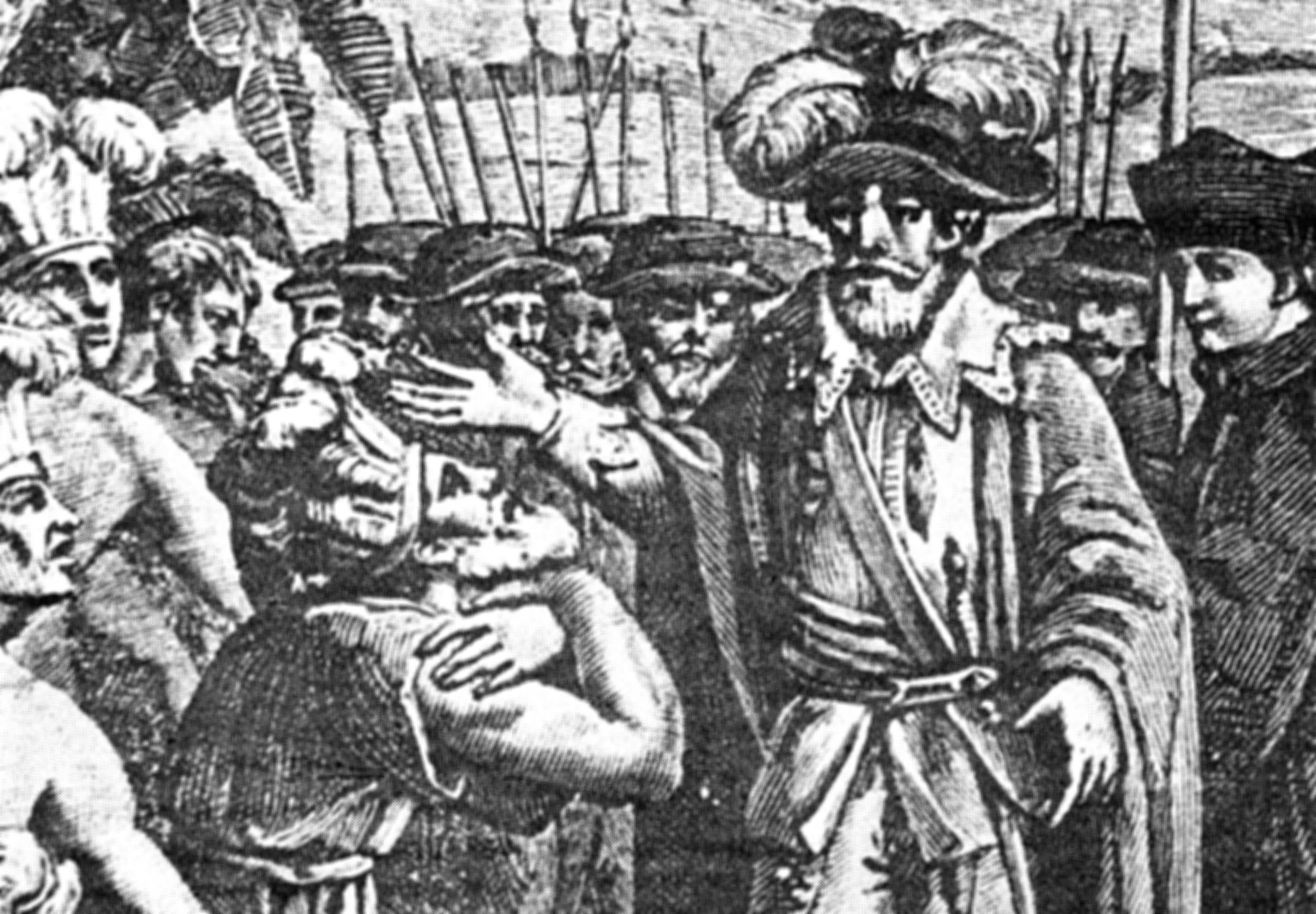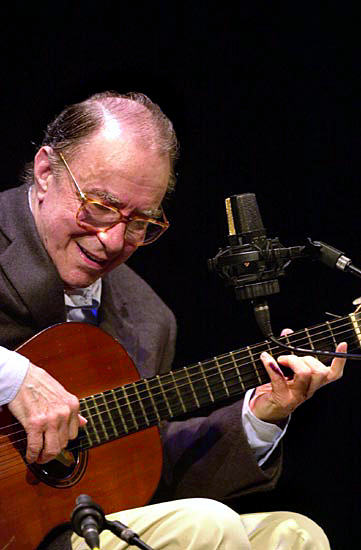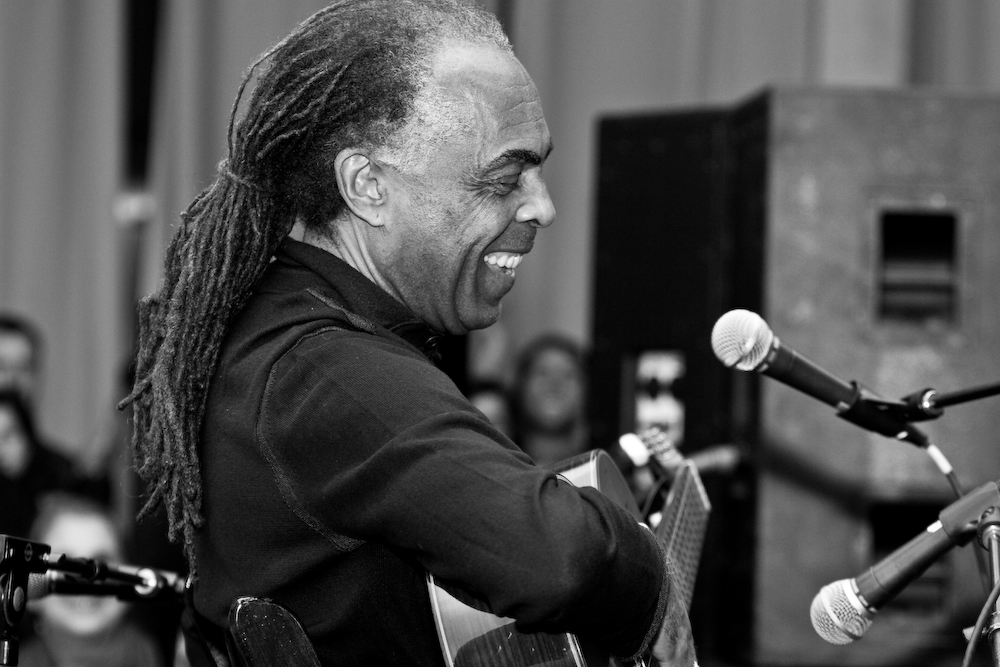|
Novos Baianos
Novos Baianos (English: ''New Bahians'') were a Brazilian rock and MPB group from Salvador, Bahia, in 1969. The group was active between 1969 and 1979, enjoying success throughout the 1970s. The group had reunions in 1997 and 2015 respectively. Together, the group recorded eight full-length studio albums, as well as two live albums. The group was highly influential on Brazilian popular music and Brazilian rock of the 1970s, combining various musical elements from genres such as samba, bossa nova, frevo, baião, choro, and rock n' roll. The group's music was also heavily influenced by 1970s counterculture and the emerging Tropicália artistic movement. The group's original line-up consisted of Moraes Moreira (vocals and acoustic guitar), Paulinho Boca de Cantor (vocals), Pepeu Gomes (electric guitar), Baby Consuelo (vocals and percussion), and Luiz Galvão (lyrics). The group regularly collaborated with A Cor do Som, a sub-group within Novos Baianos, which consisted of ... [...More Info...] [...Related Items...] OR: [Wikipedia] [Google] [Baidu] |
Salvador, Bahia
Salvador (English: ''Savior'') is a Brazilian municipality and capital city of the state of Bahia. Situated in the Zona da Mata in the Northeast Region of Brazil, Salvador is recognized throughout the country and internationally for its cuisine, music and architecture. The African influence in many cultural aspects of the city makes it a center of Afro-Brazilian culture. As the first capital of Colonial Brazil, the city is one of the oldest in the Americas and one of the first planned cities in the world, having been established during the Renaissance period. Its foundation in 1549 by Tomé de Sousa took place on account of the implementation of the General Government of Brazil by the Portuguese Empire. Centralization as a capital, along with Portuguese colonization, were important factors in shaping the profile of the municipality, as were certain geographic characteristics. The construction of the city followed the uneven topography, initially with the formation of two leve ... [...More Info...] [...Related Items...] OR: [Wikipedia] [Google] [Baidu] |
Brazilian Rock
Brazilian rock refers to rock music produced in Brazil and usually sung in Portuguese. In the 1960s it was known as , from the Portuguese transcription of the line "Yeah, yeah, yeah" from the Beatles song "She Loves You". Overview Rock entered the Brazilian music scene in 1956, with the screening of the film ''The Blackboard Jungle'', featuring Bill Haley's "Rock Around the Clock", which would later be covered in Portuguese by Nora Ney. The electric guitar was already used in Brazil in 1948, in Salvador carnival bloc of Dodô e Osmar. They invented the famous ( en, "electric stick"), the first electric guitar without microphonic feedback, with its typical acute color characteristic and sustained sound, no more similar to the previous jazzistic electric guitar models (then they developed another with two arms) and in 1949 they played carnival songs with this guitar at the first time in an open car named then "Trio Elétrico" on the Salvador streets (today in the big trucks with ... [...More Info...] [...Related Items...] OR: [Wikipedia] [Google] [Baidu] |
Vargem Grande, Rio De Janeiro
Vargem Grande (Big Meadow) is a neighborhood in the Rio de Janeiro#West Zone, West Zone of Rio de Janeiro, Brazil. References Neighbourhoods in Rio de Janeiro (city) {{RiodeJaneiro-geo-stub ... [...More Info...] [...Related Items...] OR: [Wikipedia] [Google] [Baidu] |
Novos Baianos
Novos Baianos (English: ''New Bahians'') were a Brazilian rock and MPB group from Salvador, Bahia, in 1969. The group was active between 1969 and 1979, enjoying success throughout the 1970s. The group had reunions in 1997 and 2015 respectively. Together, the group recorded eight full-length studio albums, as well as two live albums. The group was highly influential on Brazilian popular music and Brazilian rock of the 1970s, combining various musical elements from genres such as samba, bossa nova, frevo, baião, choro, and rock n' roll. The group's music was also heavily influenced by 1970s counterculture and the emerging Tropicália artistic movement. The group's original line-up consisted of Moraes Moreira (vocals and acoustic guitar), Paulinho Boca de Cantor (vocals), Pepeu Gomes (electric guitar), Baby Consuelo (vocals and percussion), and Luiz Galvão (lyrics). The group regularly collaborated with A Cor do Som, a sub-group within Novos Baianos, which consisted of ... [...More Info...] [...Related Items...] OR: [Wikipedia] [Google] [Baidu] |
João Gilberto
João Gilberto (born João Gilberto Prado Pereira de Oliveira – ; 10 June 1931 – 6 July 2019) was a Brazilian guitarist, singer and composer who was a pioneer of the musical genre of bossa nova in the late 1950s. Around the world, he was often called "father of bossa nova"; in his native Brazil, he was referred to as ''"O Mito"'' ("The Legend"). Early life João Gilberto was born in Juazeiro, Bahia, the son of Joviniano Domingos de Oliveira, a wealthy merchant, and Martinha do Prado Pereira de Oliveira. He lived in his native city until 1942, when he began to study in Aracaju, Sergipe, returning to Juazeiro in 1946. At the age of 14, Gilberto got his first guitar from his grandfather despite disapproval from Gilberto's father. Still in Juazeiro, he formed his first band, called "Enamorados do Ritmo". Gilberto moved to Salvador, Bahia, in 1947. During his three years in the city, he dropped out of his studies to dedicate himself exclusively to music and at the age of 18 b ... [...More Info...] [...Related Items...] OR: [Wikipedia] [Google] [Baidu] |
Psychedelic Rock
Psychedelic rock is a rock music Music genre, genre that is inspired, influenced, or representative of psychedelia, psychedelic culture, which is centered on perception-altering hallucinogenic drugs. The music incorporated new electronic sound effects and recording techniques, extended instrumental solos, and improvisation. Many psychedelic groups differ in style, and the label is often applied spuriously. Originating in the mid-1960s among British and American musicians, the sound of psychedelic rock invokes three core effects of LSD: depersonalization, dechronicization, and dynamization, all of which detach the user from everyday reality. Musically, the effects may be represented via novelty studio tricks, electronic music, electronic or non-Western instrumentation, disjunctive song structures, and extended instrumental segments. Some of the earlier 1960s psychedelic rock musicians were based in contemporary folk music, folk, jazz, and the blues, while others showcased an expl ... [...More Info...] [...Related Items...] OR: [Wikipedia] [Google] [Baidu] |
Acabou Chorare
''Acabou Chorare'' (''No More Crying'' in English) is the second studio album by Brazilian rock and MPB group Novos Baianos. The album was released in 1972 by Som Livre, following the group's moderately successful debut ''É Ferro na Boneca'' (1970). During the recording of the album, the group took inspiration from various contemporary artists of the time, such as Jimi Hendrix, João Gilberto, and Assis Valente. In addition, Gilberto heavily influenced the sound of the album, as he served as the group's mentor during the album's recording sessions. The album was written and recorded as a response to contemporary Brazilian music of the 1970s, which often dealt with melancholic subject matters (due in part to the ongoing military dictatorship of the time period). The album imparts a diverse blend of musical genres and is noted for its creative mixture of samba and rock music. Decades after release, the album remains one of the most important and influential in the history of popul ... [...More Info...] [...Related Items...] OR: [Wikipedia] [Google] [Baidu] |
Cavaquinho
The cavaquinho (pronounced in Portuguese) is a small Portuguese string instrument in the European guitar family, with four wires or gut strings. More broadly, ''cavaquinho'' is the name of a four-stringed subdivision of the lute family of instruments. A cavaquinho player is called a ''cavaquista''. Forms There are several forms of cavaquinho used in different regions and for different styles of music. Separate varieties are named for Portugal, Braga (''braguinha''), Minho (''minhoto''), Lisbon, Madeira, Brazil, and Cape Verde; other forms are the ''braguinha'', ‘''cavacolele''’, cavaco, machete, and ukulele. Portuguese The Venezuelan concert cuatro is very nearly the same instrument, but somewhat larger. Cavaquinho Brasileiro, cavaco, and cuatro The Brazilian cavaquinho is slightly larger than the Portuguese cavaquinho, resembling a small classical guitar. Its neck is raised above the level of the sound box, and the sound hole is usually round, like cavaquinhos from ... [...More Info...] [...Related Items...] OR: [Wikipedia] [Google] [Baidu] |
A Cor Do Som
A Cor do Som ("The Color of Sound") is a Brazilian musical group that spun off the backing band that supported Moraes Moreira following his departure from Novos Baianos. Originally this was the name of a side project of Novos Baianos itself which members lived together and experimented with music that blended elements of samba, rock, frevo, choro and baião. The name of the group was suggested by Caetano Veloso and inspired by a song by Moreira and Luis Galvão. History After a period working as a sub-group of Novos Baianos, A Cor do Som started to support Moraes Moreira in his solo career as a backing band in 1975. Later, by 1977, they started to work independently. They experimented with new sounds based on their experiences with Moreira and his fellow Novos Baianos member Pepeu Gomes. In their debut, self-titled album (WEA 1977), the line-up was Dadi Carvalho (ex-Novos baianos and Jorge Ben) on the bass guitar, his brother Mú Carvalho (ex- A Banda do Zé Pretinho) on the ... [...More Info...] [...Related Items...] OR: [Wikipedia] [Google] [Baidu] |
Tropicália
Tropicália (), also known as Tropicalismo (), was a Brazilian artistic movement that arose in the late 1960s. It was characterized by the amalgamation of Brazilian genres—notably the union of the pop culture, popular and the avant-garde, as well as the melding of Brazilian tradition and foreign traditions and styles. Today, Tropicália is chiefly associated with the musical faction of the movement, which merged Music of Brazil, Brazilian and Music of Africa, African rhythms with British and American psychedelic music, psychedelia and pop rock. The movement also included works of film, theatre, and poetry. The term Tropicália (Tropicalismo) has multiple connotations in that it played on images of Brazil being that of a "tropical paradise".Veloso, Caetano, Barbara Einzig, and Isabel de Sena. 2003. Tropical truth: a story of music and revolution in Brazil. Tropicalia was presented as a "field for reflection on social history". The movement was begun by a group of musicians fro ... [...More Info...] [...Related Items...] OR: [Wikipedia] [Google] [Baidu] |
Rock And Roll
Rock and roll (often written as rock & roll, rock 'n' roll, or rock 'n roll) is a Genre (music), genre of popular music that evolved in the United States during the late 1940s and early 1950s. It Origins of rock and roll, originated from African-American music such as jazz, rhythm and blues, boogie woogie, gospel music, gospel, as well as country music. While rock and roll's formative elements can be heard in blues records from the 1920s and in country records of the 1930s,Peterson, Richard A. ''Creating Country Music: Fabricating Authenticity'' (1999), p. 9, . the genre did not acquire its name until 1954. According to journalist Greg Kot, "rock and roll" refers to a style of popular music originating in the United States in the 1950s. By the mid-1960s, rock and roll had developed into "the more encompassing international style known as rock music, though the latter also continued to be known in many circles as rock and roll."Kot, Greg"Rock and roll", in the ''Encyclopædia Bri ... [...More Info...] [...Related Items...] OR: [Wikipedia] [Google] [Baidu] |






